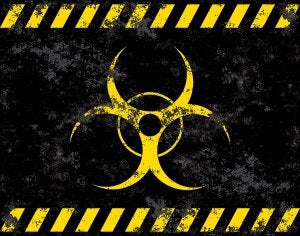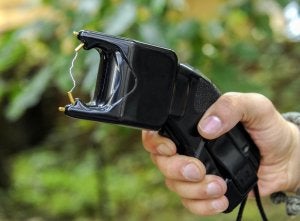-
Don’t Let Evidence Vanish in a Nursing Home Abuse Case
Even if you meticulously research nursing homes before moving your loved one, he or she may fall victim to nursing home abuse . Know the signs of possible abuse, and talk to a personal injury lawyer serving Riverside as soon as possible if anything raises your suspicions. Your attorney will give you invaluable guidance about preserving evidence for the case, and about your legal options regarding litigation and the nursing home contract.
Take photographs of the evidence.
Visual evidence is difficult to dispute, and it can have a powerful effect on a jury if the case goes to trial. If your loved one has unusual bruises, develops bed sores, or has sustained unexplained lacerations, take pictures of these wounds. Take additional pictures over time to document whether the wounds heal as expected. It’s preferable to time-stamp the pictures, if possible. You should also take photos of any conditions in the room or throughout the nursing home that may have contributed to your loved one’s injuries. These hazards may include worn or ripped carpeting, inadequate lighting, or broken furniture. Get pictures of everything that looks suspicious as quickly as possible, as hazardous conditions may be repaired after an incident in an attempt to avoid liability.
Record witness statements.

Nursing homes tend to be densely populated facilities. Talk to your loved one’s roommate, if applicable, and the neighbors. Talk to other staff members, and write down a timeline of what happened. Ask the witnesses to give you a written, signed statement of their version of the events. It’s important to interview witnesses as soon as possible after the incident, as memories can fade and change over time.Collect documentation.
Just about everything is documented in a long-term care facility, including nursing logs that show who was working a particular shift, records of when medications were administered, and charts that reflect when patients were observed to have injuries. Your personal injury lawyer can assist you in collecting the necessary documents, via a subpoena if necessary.
Request your loved one’s medical records.
Your attorney will need a copy of your loved one’s medical records to prove that he or she suffered injuries, and that those injuries were directly caused by the act of nursing home abuse. It’s not unheard of for nursing home staff to delay taking their residents to the ER when an injury occurs. Check with your loved one’s doctor directly about his or her care, rather than relying on the information provided by the nursing home staff.
-
What Parents Need to Know About Brachial Plexus Injuries
It’s possible for brachial plexus injuries to be acquired throughout one’s lifetime, usually in car or motorcycle crashes. When a newborn is diagnosed with this sort of injury, the parents deserve answers. Brachial plexus birth injuries can range from relatively minor and temporary to permanent and catastrophic. Personal injury lawyers in the Riverside area who handle catastrophic injury cases can investigate the causation. In some cases, a birth injury may be the result of medical malpractice during labor and delivery.
Causes and Risk Factors
The bundle of nerves that stems from the cervical spinal cord and travel down the arm is known as the brachial plexus. The three main ways these nerves can sustain damage are by severing, stretching, or applying excessive pressure to them. In newborns, this can happen during a difficult or prolonged birth, especially if the child is of a large birth weight or is in a breech presentation. As the child passes through the birth canal, the shoulders can become lodged. The pressure can inflict damage to the nerves. In some cases, overly aggressive maneuvering or instrumentation usage by the obstetrician can result in stretched or torn nerves.

Signs and Symptoms
Contacting a personal injury lawyer won’t be your top priority when you’re in the hospital with your newborn. But do try to keep written notes about your child’s condition in the event that you need to file a complaint. Newborns with brachial plexus injuries may display the following problems:
- Lack of a Moro reflex on the affected arm
- Lack of movement in the arm or hand
- Decreased grip strength
- Affected arm held bent and against the body
Babies who will recover usually do so within three to nine months. If your child does not regain movement, strength, and sensation in the affected arm during this time, it’s quite likely that the long-term prognosis will be poor.
Treatments and Rehabilitation
If the brachial plexus injury was caused by medical malpractice, a personal injury lawyer can help you seek compensation to cover your child’s treatment and long-term rehabilitation. Surgery is sometimes attempted if the child doesn’t recover within nine months. Before that time, the infant may benefit from gentle massage and range-of-motion exercises.
-
FAQs and Answers About Lane Change Truck Accidents
Big rig accidents can happen at any time. Merging into traffic and changing lanes are particularly hazardous. Passenger vehicle drivers are fortunate to escape from a truck accident with their lives. Adding insult to injury, survivors must then contend with exorbitant medical bills and perhaps even permanent disability. For survivors in the Riverside area, a car accident lawyer is an essential advocate. He or she can pursue an accident lawsuit to help the survivor secure much-needed compensation to recover from the crash .
When is the truck driver to blame for the crash?
Truck drivers are found to be at least partially to blame in the majority of all types of truck accidents. It’s possible that other factors can contribute, such as poor visibility, inclement weather, and poor road construction. Truck drivers can make dangerous decisions when they are in a hurry to reach their destination, such as weaving between lanes, failing to use a turn signal, failing to remain aware of nearby traffic, and failing to carefully check the mirrors. When filing an accident lawsuit, your lawyer can evaluate the driver’s medical records, as well as surveillance footage, eyewitness statements, and police reports to consider the role of the trucker’s possible negligence.

Aren’t truck drivers trained to make safe lane changes?
Yes, all commercial big rig operators in the U.S. are required to complete rigorous training and testing. However, truck drivers are still human and they often make mistakes, some of which can be costly. During an investigation, your accident lawyer may find that the truck driver was negligent in any of the following ways:
- Being distracted by an electronic device
- Driving aggressively
- Misjudging the distance between vehicles
- Falling asleep at the wheel
- Driving while intoxicated or under the influence of drugs or alcohol
Is it possible for the passenger vehicle driver to be at fault?
Most passenger vehicle drivers know that big rigs need plenty of space on all sides, including in front of them. It’s impossible to slow down such a large vehicle quickly enough to avoid hazards ahead. A car driver may be at fault for the crash if he or she merged into the trucker’s lane ahead of the big rig, and didn’t leave enough space between vehicles.
-
Is There a Statute of Limitations on Toxic Torts in California?
A toxic tort is a claim that someone was harmed or wrongfully killed as a result of exposure to environmental hazards, such as pesticides or groundwater pollution caused by an industrial plant. Like other personal injury lawsuits, residents in Riverside, California and throughout the state are subject to statutes of limitations for toxic torts. This means there is a deadline to file a lawsuit, and if no action is taken by that time, the injured party forfeits the right to pursue compensation in court. To avoid giving up your legal rights, contact a personal injury lawyer as soon as you realize your injuries were caused by someone else’s negligence.

In California, the statute of limitations for filing a toxic tort is two years. The clock starts ticking on the date that the toxic exposure occurred. If the case is a wrongful death lawsuit, the two-year deadline begins on the date of the person’s death. It isn’t always possible for plaintiffs to immediately connect the dots between an illness and toxic exposure. A personal injury lawyer may still file a lawsuit no later than two years from the date that the plaintiff knew or reasonably should have known that harm occurred because of the toxic exposure.
You can also check out some of our previous client testimonials here.
-
The Shocking Truth About Tasers and the Injuries They Inflict
Stun guns have an undeserved reputation for being safe simply because they are intended to be non-lethal weapons. But just because someone might not die from a Taser, doesn’t mean he or she cannot suffer severe injuries. Police officers have a responsibility to use all weapons in a controlled, thoughtful manner. But government liability lawyers in Riverside know all too well the prevalence of police brutality and excessive force violations. Contact a personal injury lawyer right away if you or a loved one has sustained injuries from an unwarranted Taser attack.
Legal Liability
The specifics of a government liability lawsuit can depend on the exact classification of the victim, such as whether he or she was a suspect, detainee, or convict. Since suspects and detainees haven’t been convicted, the use of excessive force or punishment against them could be considered a violation of the Fifth and Fourteenth Amendments, which guarantee the right of due process. On the other hand, the unwarranted use of Tasers against convicts who have already received due process would be a violation of the Eighth Amendment, which protects individuals from cruel and unusual punishment.
Taser Injuries
Tasers can cause severe injuries in several ways. First, hand-held stun guns work by shooting two barbed
 electrodes at the victim. The barbs penetrate the skin, causing a painful wound that requires careful treatment, especially if the barbs penetrated near a sensitive body part like the neck or face. Second, the electrodes deliver up to 50,000 volts of electricity to the body, which disrupts the body’s natural and necessary functions. Third, the jolt of 50,000 volts causes the person to fall to the ground, and to violently and uncontrollably spasm. All of these actions can cause serious injuries, including the following:
electrodes at the victim. The barbs penetrate the skin, causing a painful wound that requires careful treatment, especially if the barbs penetrated near a sensitive body part like the neck or face. Second, the electrodes deliver up to 50,000 volts of electricity to the body, which disrupts the body’s natural and necessary functions. Third, the jolt of 50,000 volts causes the person to fall to the ground, and to violently and uncontrollably spasm. All of these actions can cause serious injuries, including the following:- Penetrating wounds (safe removal of barbs requires specialized medical knowledge)
- Skin burns
- Cardiac disease
- Cardiac arrest and sudden death
- Mental health crisis (possibly exacerbated by substance abuse)
- Head trauma
- Eye injuries
- Testicular torsion
- Fractures
- Torn tendons and ligaments
- Organ damage
Arguably, the possible effects on a pregnant woman are even more frightening. There is a connection between the use of stun guns on pregnant women and miscarriage. Another troubling aspect of indiscriminate Taser use is the fact that it’s impossible for a police officer to know if a person has a pre-existing health condition. A stun gun can interfere with a life-saving pacemaker, for example, yet many officers won’t think twice before using a “non-lethal” stun gun, even when the situation does not warrant it.
““
-
Determining Causation in Court
One of the primary tasks of personal injury lawyers serving the Riverside area is proving causation. This refers to whether the negligent actions taken by the defendant caused the plaintiff’s slip and fall injury. Watch this featured video to learn about two types of causation and how they might be proven in court.
“But for” causation indicates that, but for the defendant’s actions, the plaintiff would not have sustained the injury. For example, but for the defendant’s failure to clear the aisles of a store, the plaintiff would never have been in a trip and fall accident. Another type is substantial causation. This means that the injury might have occurred anyway, but the defendant’s actions substantially contributed to it. As an example, a hypothetical plaintiff with pre-existing knee pain files a personal injury lawsuit, claiming the defendant’s failure to clear the aisles of a store resulted in a fall that required knee replacement surgery. Since the plaintiff has a history of knee problems, he or she might have needed the surgery at some point anyway. However, the defendant’s actions substantially contributed to the worsening of the knee pain, which led to the surgery.
-
Who Is Liable for Climbing Wall Injuries?
Indoor rock climbing gyms are a great way to experience the thrill of the sport without worrying about falling off a cliff hundreds of feet in the air. But even indoor climbing walls present the possibility of injuries, and injured climbers might not always be the responsible party. A climbing wall injury case can be a little more complicated than the average slip and fall lawsuit . Consult a personal injury lawyer serving the Riverside area who has plenty of experience with complicated types of premises liability cases.

Assessing the Possibility of Product Liability
Injured climbers might assume that the gym is usually to blame for an accident and their subsequent injuries. But this isn’t necessarily true in all cases. Your personal injury lawyer will consider whether the climbing equipment was inherently defective in design or manufacture. If so, then the manufacturer could be held liable for the damages. For example, the manufacturer might have produced the carabiner out of a poor quality of aluminum alloy that caused it to malfunction. One possible defense to this claim is that the climber was using the equipment in a manner not intended by the manufacturer. Hypothetically, if the climber decided to light the climbing rope on fire, and the climber fell as a result, then the manufacturer would not be found liable because the rope was never supposed to be lit on fire. Additionally, the climber could be found liable for the damage to the equipment and gym.
Taking a Closer Look at Gym Waivers
One key piece of evidence in any climbing gym lawsuit is the waiver. Climbers are required to sign a waiver before they’re allowed to use the equipment, and many of them don’t read the full document. The premises liability attorney will need to carefully examine the waiver, and consider the facts of the case in light of the provisions in the document. Liability waivers are supposed to prevent climbers from suing the gym in the event of an injury. However, if the gym owner or supervisor can be proven negligent, climbers can usually file a lawsuit regardless.
Learn more about our personal injury services here or read some of our client testimonials here.
““
-
Environmental Hazards: How Victims Got Justice
If someone’s spouse dies as a result of acute toxicity from pesticides or chemicals, the surviving victim may have legal recourse. This could include a wrongful death claim that falls under the category of toxic torts. Toxic torts are claims filed by a personal injury lawyer in Riverside. They seek compensation for the victims based on the defendant’s negligence in causing the decedent to be exposed to deadly environmental hazards. A personal injury lawsuit won’t bring the decedent back, but it can allow the surviving family members to attain a sense of justice. It’s also possible to file a toxic tort in the absence of a wrongful death, as long as the injuries were directly caused by the negligent act.

Legal Concepts Regarding Toxic Torts
Like other personal injury lawsuits, a toxic tort claim is based on the legal concepts of liability and negligence. Negligence refers to any careless behavior that leads to the plaintiff’s injury or the decedent’s wrongful death. Liability means that the defendant has been found responsible. In order to win a favorable jury verdict for the plaintiff, the lawyer must prove the following:
- The defendant owed a duty to act with reasonable care toward the public or a specific person.
- The defendant’s careless behavior failed to meet this duty of reasonable care.
- The defendant’s careless behavior caused the plaintiff to suffer harm.
Hypothetically, assume that the defendant is the owner of a farm that grows peppers, and he or she uses pesticides on the fields. The plaintiff is a farmworker who was exposed to toxic levels of pesticides after being instructed to apply the chemicals. The plaintiff may sue the defendant for these injuries if the defendant failed to provide the worker with the necessary safety equipment.
Examples of Toxic Torts
Toxic torts can be based on a wide range of allegations. For instance, plaintiffs may claim that a landfill or manufacturing plant polluted their groundwater, causing cancers and birth defects. One of the most well-known toxic torts is the Love Canal case. In the mid-1900s, Hooker Chemicals & Plastics Corp. used a dump site at Love Canal, New York to bury 22,000 tons of hazardous chemicals. During the next two decades, the chemicals seeped into the pipes and into the air. More than 1,000 families had to leave their homes permanently, and more than 600 personal injury lawsuits were filed. The cases resulted in multi-million dollar settlements.
-
Understanding Comparative Negligence
Some states are comparative negligence states, and others follow contributory negligence rules. The difference between these two models will be important if you ever file a personal injury lawsuit in Riverside. Since California is a comparative negligence state, you can still recover compensation for your losses even if you were partially at fault for your slip and fall injury. Hear how this works by watching this brief video.
It uses the hypothetical example of Perry and David. Perry is walking on the street while immersed in a handheld videogame. David is listening to music while skateboarding. David crashes into Perry, and Perry sues David for his injuries. The jury determines that Perry is 40% responsible for the accident, which means David is 60% responsible. The rules of comparative negligence state that Perry’s monetary award will be reduced by 40%.
““
-
Can I Sue Someone Who Is in Jail?
Personal injury lawsuits are sometimes subjected to unexpected snags, such as the incarceration of the defendant. You do have the legal right to sue someone who is in jail or prison, but the logistics will be more challenging. Talk to a personal injury lawyer serving Riverside about the particulars of your case to determine whether it’s worth your time to file a lawsuit. This will depend on factors such as the strength of the evidence against the defendant, the extent of your damages, and the amount of assets the defendant is likely to have. Since the defendant is behind bars, it’s likely that the most significant factor to consider is whether the defendant can pay the damages.
If you do have a personal injury lawyer file a claim against an inmate, expect some complications to arise. Inmates are subject to being transferred to different facilities. The same inmate may be transferred several times during his or her sentence. This may delay the resolution of your case. On the other hand, if the inmate was convicted of a crime pertaining to your injuries, then it stands to reason that the lawsuit is based on substantial evidence supporting your claims.
Contact our team today to learn more or check out some of our client testimonials.

RECENT POSTS
categories
- Uncategorized
- Slip & Fall
- Dog Bites
- Personal Injury
- Motorcycle Injury
- Truck Accident
- Accident Lawyer
- Car Crashes
- Infographic
- Nursing Home Abuse
- Non-Economic Damages
- Wrongful Death
- Personal Injury Lawyer
- Birth Injuries
- Taser Injuries
- Slip and Fall Attorney
- Government Liability Cases
- Settlement Offers
- Private Nuisance Lawuits
- Impacted Fracture
- Tort Law
- Burn Injury
